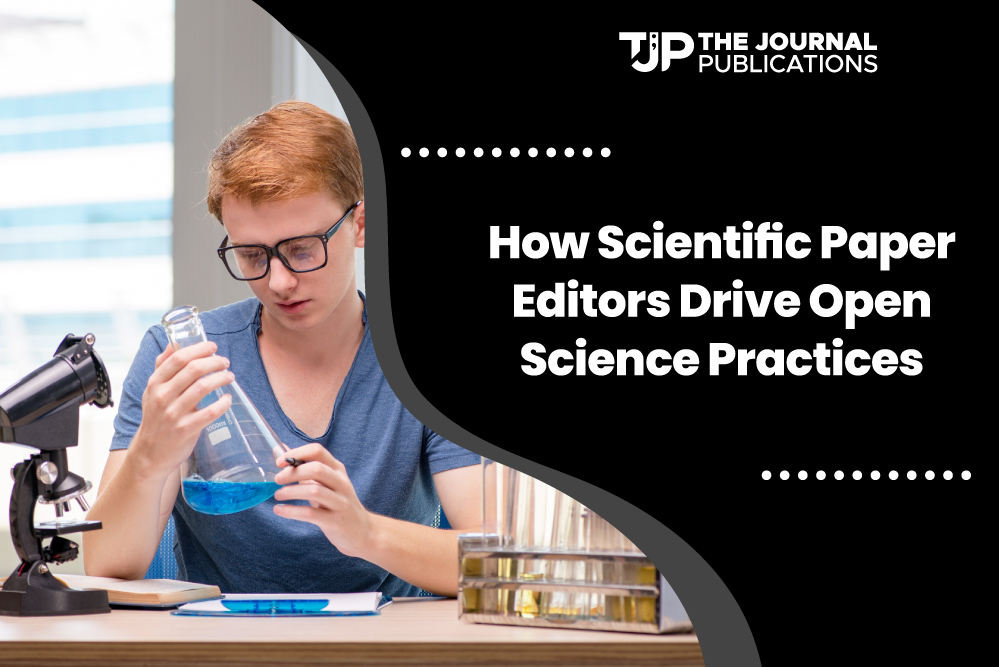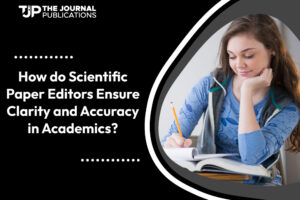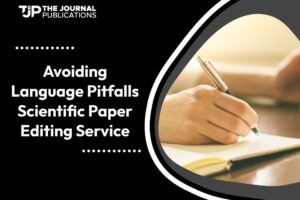Outline
- Intro
- What Is Open Science?
- The Rise of Transparent Editing Practices
- Advantages of Transparent Editing
- Increased Trust and Credibility
- Understanding Editorial Standards
- Improved Understanding of the Research Process
- The Role of Editors in Promoting Open Science
- Facilitate Open Data Requirements
- Supplementary Materials Review
- Support for Open-Access Publishing
- Collaborative Tools Used in Transparent Editing
- Editors-Interactive Editing, Discussion
- Version Control Systems
- Any collaborative editing platforms
- Practices of Post-Publication Transparency
- Ethical Considerations in Transparent Editing
- Conflict of interest avoidance
- Promoting Ethics in Editing
- Adherence to Responsible Conduct Guidelines
- Impact on Quality of Peer Review
- Challenges in Implementation of Transparent Editing
- Preserving Anonymity
- More Work for Editors
- Variation in Journal Practices
- Trends in Open Access Journals and Transparent Editing
- Closing Note
Intro
With the most rapid expansions, open science has gone hand in glove with a general movement toward transparency throughout the scientific publishing process. Driving this change is an evolving scientific paper editors contribution, embracing openness in how research is peer-reviewed and published.
Open peer review and publication are reformatting the face of editing practices, making scientific communication closer to open science. The following blog discusses how open science is championed by editors, the benefits accompanying transparent editing, and the challenges accompanying changes.
What Is Open Science?
Open science is an internationally led movement that intends to make all research outputs publicly available. It is about disseminating practices of sharing and publishing data, methods, software, and even the peer-review process in as open a way as possible. Still highly instrumental in knowledge sharing between disciplines, it has also fostered collaborations among researchers at large;
The following objectives form the basis of open science:
- Free Access to Research: The research findings and the data behind them are openly available to all people so that anyone can access and build on science work.
- Sharing of Research Outputs: Generally, the sharing of research outputs, such as findings, data, methodologies, and software, in favor of researchers;
- Interdisciplinary Collaboration: Encouraging interaction across scientific disciplines to stimulate invention and finding.
The Rise of Transparent Editing Practices
Specially, transparent editing means the public disclosure of the editorial and peer-reviewing procedures. Traditionally, the process of editing and reviewing manuscripts was closed, and only the final version of an article was made available to readers. Now, transparent editing opens up this process to the world by:
- Editing History Revealed: The editors share the changes made to a manuscript in review, commenting on the same, hence giving out suggestions and the rationale behind such decisions.
- Revision Tracking: By showing exactly how the paper evolved through each stage of review, a reader can all but understand in a practical way how scientific arguments and conclusions have been refined.
- Providing Context by the Editor: Comments and suggestions by the scientific paper editor give context to the readers about what constituted the editorial standards and decisions when revising the manuscript.
Advantages of Transparent Editing
Transparent editing practices offer several advantages that can significantly improve the quality and trustworthiness of scientific publications:
Increased Trust and Credibility
Making the editorial process transparent builds trust in the scientific community. Readers can appreciate how revisions have strengthened the manuscript and understand what rigor the review process entailed. This transparency allows readers to be confident that the conclusions of the research are sound and tested with due care.
Understanding Editorial Standards
Transparent Scientific paper editing help provides transparency to the decisions of the editors and reviewers on the manuscripts they review. As a reader, they trace how scientific arguments are progressively improved, what problems are pointed out through peer review, and how they are further resolved.
Improved Understanding of the Research Process
Transparent editing enables a more comprehensive understanding of the research process. By showcasing the development of a manuscript from initial submission to publication, this allows readers to appreciate the critical role, editors and reviewers play in shaping the final paper.
The Role of Editors in Promoting Open Science
The scientific editor becomes indispensable, in every aspect for the adoption of open science practices. They assist enabling the peer-review process but also assures that any research published in Open Access Journals follows the principles of openness and transparency. Here’s how editors contribute:
Facilitate Open Data Requirements
Here, authors follow open data policies, and sometimes make data sets, software, and supplementary materials publicly available. They also evaluate the completeness of resources and access to most recent materials.
Supplementary Materials Review
Reflection to main manuscript, Scientific Editors consider supplementary materials datasets or code likewise. Peer review serves the added value of ensuring that supplementary materials are quality and of use to the broader research community.
Support for Open-Access Publishing
The scientific paper editor also plays the role of certifying that papers are up to the standards of open-access journals that emphasize free access to research findings. There are multiple options to select the open access science journals.
Collaborative Tools Used in Transparent Editing
The arrival of both digital platforms and collaborative tools has made transparent editing more viable. The digital tool for collaboration allows this process to become more efficient because editors and authors can jointly work in real time:
Editors-Interactive Editing, Discussion
Through threaded commenting, online platforms allow editors to interactively discuss possible changes with authors. This helps in ironing out ambiguities and enhances the quality of the manuscript in general.
Version Control Systems
Changes within the course of editing are allowed to be tracked with tools like version control systems. This gives room for transparency in decision-making processes while providing a record of how and why such changes have been made.
Any collaborative editing platforms
Web-based platforms include Overleaf and Manuscript Central, which offer real-time collaboration, enabling the editors and authors to work in tandem on the same manuscript. This reduces the time consumed in editing and improves communication.
Practices of Post-Publication Transparency
The push for openness extends beyond the editorial stage. Post-publication transparency involves making additional aspects of the peer review process publicly available, such as:
-
Publishing Peer Review Reports
Some journals publish their peer review reports alongside the article, giving an insight into some of the feedback or critique applied that formed the final paper.
-
Including Reviewer Identities
In certain cases, journals disclose the identities of reviewers who participated in the review process. This adds an extra layer of accountability to the peer review.
-
Making Editorial Comments Accessible
Where relevant, editors’ comments and decision letters can be included as supplementary material to inform the readers of a publication about the deliberations that played a role in accepting or rejecting it.
Ethical Considerations in Transparent Editing
While transparent editing promotes openness, it also fosters significant ethical issues. Ethical publishing in science helps to protect the integrity and confidence in research:
Conflict of interest avoidance
Transparency provides a more general stance in which to identify potential conflicts of interest and to ensure in general that editors and reviewers cannot be swayed by personal or financial considerations.
Promoting Ethics in Editing
Transparent editing avoids unethical practices, such as ghostwriting or undisclosed third-party editing, and allows for integrity in the publication process.
Adherence to Responsible Conduct Guidelines
Open editing, by making the editorial process transparent, encourages compliance with guidelines on ethical standards and responsible conduct of research.
Impact on Quality of Peer Review
Transparent editing practices have the potential to enhance the quality of peer review:
-
Accountability for Reviewers and Editors
Knowing that comments and suggestions are publicly available also provides an added impetus to reviewers and editors to give more substantial and helpful feedback.
-
Constructive Dialogue between Authors and Reviewers
Openness arising from transparency allows the author, reviewers, and editors to engage in a constructive dialogue that leads to significant improvements in the manuscript.
-
Bias Reduction in the Review Process
Transparency in editing can help reduce biases that arise, due to the reasons behind an editorial decision being revealed.
Challenges in Implementation of Transparent Editing
While offering some very real advantages, transparent editing also presents several challenges:
Preserving Anonymity
While transparency remains an issue in which tightly guarded confidence is placed, there’s equally a need to ensure that all authors and their reviewers retain their anonymity. The journals face the challenge of balancing openness with confidentiality.
More Work for Editors
This is more time-consuming for the editors since they have to handle the additional records and make the editing history transparent.
Variation in Journal Practices
Standards of transparent editing vary among journals, and this in itself is a barrier to the achievement of uniformity in practice throughout the publishing industry.
Trends in Open Access Journals and Transparent Editing
The implementation of open science principles has increasingly gained momentum recently, especially in open-access journals themselves:
-
Transparency in Editing is a Usual Practice
Unfortunately, this has been countered by many open-access journals that have made open editing a centerpiece of their editorial policies, demonstrating their commitment to openness.
-
Traditional Journals-Experimentation
Indeed, considering the growing demand for openness within research, some traditional journals have been attempting to pursue transparent peer-review initiatives.
-
Aligning with the Democratization of Science
Transparent editing falls square within larger trends to democratize scientific knowledge and to place high-quality research before a global rather than local audience.
Closing Note
Scientific paper editors make very key contributions to open science initiatives. They help develop more comprehensive insights with increased trust in the research cycle by open science editing. However, there are few challenges that arise in confrontation with those practices. Here transparency outweighs and is considered an essential ingredient in the future of scientific publishing. Scientific journals are adopting these transparent editing practices. The closer this scientific community comes to openness, accountability, and collaboration.





